2018 APS April Meeting, Columbus, Ohio — This year’s April Meeting continued the theme of "Quarks to Cosmos" with three plenary sessions, most notably the Kavli Foundation Keynote Plenary Session: A Feynman Century. A second plenary session featured a range of topics "From Nuclear Security to Neutron Star Mergers" and a third session featured APS Medal winner Eugene Parker and Nobel Prize winners Rainer Weiss and Barry Barish.
Watch the April Meeting Plenary Sessions
A Feynman Century
The Kavli Plenary Session kicked off the April Meeting on Saturday morning with a talk on the life of Richard Feynman (1918-1988) given by an expert: his younger sister, Joan. Her talk, titled "Being Feynman’s Curious Sister" spanned her childhood spent learning from her brother, to her experiences as a female scientist, to a brief look at an example of her climate research, before ending with a remembrance of her brother.
Joan Feynman, an accomplished astrophysicist in her own right, published approximately 185 scientific papers, despite her mother’s belief that "women’s brains can’t do science." She credited her brother Richard as being her first teacher — and her first employer, paying her four cents a week to be his research assistant in his homemade electronics lab when she was five years old. Feynman also recounted Richard guiding her towards astrophysics when he took her to see an aurora.
She would go on to have a long career at the Jet Propulsion Laboratory and be the first woman elected as an official of the American Geophysical Union, where she ensured women would be welcome at all AGU meetings. Feynman took a few moments to mention some of her own research on climate change that tracked the importance of climate stabilization in the development of agriculture, and to ask a crucial question — is the climate becoming unstable again?
Feynman concluded her talk with a remembrance of her brother’s final moments after a ten-year battle with cancer. "Richard’s last message to the world was ‘this dying is boring, I wouldn’t want to do it again,’" said Feynman. "He died with a sense of humor and telling the truth."
Christopher Monroe (University of Maryland) followed with a reflection on Richard Feynman’s contributions to the field of quantum computing. "Feynman’s work has weaved it way through the field of quantum information and computing," said Monroe. Feynman was one of the first to recognize a "completely new opportunity for design" in predicting the advent of nanotechnology.
Feynman also had insight into how quantum computing could be used: To model quantum mechanics. Monroe included one of Feynman’s quotes on the use of quantum simulation: "Nature isn’t classical, dammit, and if you want to make a simulation of nature, you’d better make it quantum, and by golly it’s a wonderful problem because it doesn’t look so easy." Feynman was right about quantum computing being difficult, but Monroe pointed out two quantum technologies that may finally be built into systems: superconducting circuits and trapped atomic ions. "There have been huge investments into these technologies," said Monroe. "People are starting to make bets here."
Feynman’s legacy in quantum field theory was the focus of Roxanne Springer’s (Duke University) talk "Feynman’s Footprints." "This is a time for us to understand how we have built on Feynman’s work towards how we now understand nuclear and particle physics," said Springer. She also went beyond the science itself into Feynman’s unique scientific method that allowed him to make great discoveries and continues to inspire physicists today. Feynman’s unique diagrammatic approach to calculations is now firmly part of physics.
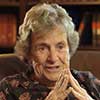
Joan Feynman

Christopher Monroe

Roxanne Springer
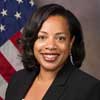
Njema Frazier

Anne Archibald
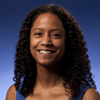
Marcelle Soares-Santos
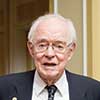
Eugene Parker
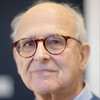
Rainer Weiss
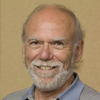
Barry Barish
However, Feynman’s scientific method likely has the biggest impact on continued discovery in physics. "Feynman’s scientific method is now what we would consider a growth mindset," said Springer. "This is how we discover new physics and enable physics students to thrive." The core components of Feynman’s scientific method included questioning authority and conventional wisdom; working out problems on his own to make sure he understood them; and finding joy that comes form meeting challenges in physics. At the end of Springer’s talk, Joan Feynman issued an addendum: "My brother didn’t just question authority — he completely ignored it."
Nuclear Security, Pulsars, and Neutron Star Mergers
Since Feynman’s death in 1988, physics has continued to progress, building on his contributions and lasting legacy, pushing further into the unknown. The environment for women in physics has also progressed, likely thanks to tenacious female physicists like Joan Feynman. The second plenary "From Nuclear Security to Neutron Star Mergers" featured three speakers, all women.
Njema Frazier (DOE) spoke about "Physics and the Government: Navigating Science Policy and Nuclear Security," and emphasized the interconnectivity of science and natural security. "Scientists have been a part of science policy since the beginning," said Frazier as she advocated for scientists to continue being part of nuclear security efforts. A crucial part of nuclear policy in the US stems from the ability of nuclear science to preserve the US weapon supply.
Frazier noted the importance of basic research in nuclear science to better understand the behavior of the components of nuclear weapons. Such research contributes to long-term scientific understanding, new tools, and sustainability of "stockpile stewardship." The stockpile of nuclear expertise is also crucial to meeting the policy needs of the US, and Frazier spoke on DOE efforts to replenish a shrinking number of nuclear experts. "Bringing in a new workforce has been challenging," said Frazier. "But we’re working with partners to look at the largest possible pool of talent."
The next talk in the plenary transitioned from nuclear weapons to pulsars with Anne Archibald’s (Netherlands Institute of Radio Astronomy) discussion of a triple star system and its use for testing Einstein’s General Theory of Relativity. The system was discovered in 2007 and has a unique configuration with a radio pulsar (a type of neutron star) and two white dwarf stars packed closely together. The pulses emitted from the radio pulsar can be measured, and microsecond changes in timing, brought about by the movement of the dwarf stars allow measurements of the system.
Archibald’s work has focused on understanding the behavior of gravity within this system: how do the objects within the system fall due to gravity? The findings show the efficacy of this special system as a testing ground. "Using this system, we have a test of general relativity that improves on all other tests," says Archibald.
Soares-Santos described research on a neutron star system — perhaps one of the most famous pairs of neutron stars whose collision was captured in August 2017 by the Laser Interferometer Gravitational-Wave Observatory, better known as LIGO. This discovery made waves in the astrophysics community as it opened up the field of multi-messenger astronomy. "This is the first neutron star merger that we have detected, and it has already delivered a lot on its promises," said Soares-Santos.
The detection of this neutron star merger on August 17 was a huge event: "everyone involved with this research will remember where they were on that day," Soares-Santos said. LIGO and Virgo detected a gravitational wave and several satellites saw a gamma-ray burst two seconds later, which would have been spectacular on its own. However, an electromagnetic counterpart of these waves and bursts was located by several independent research teams, the first being SWOPE, a small telescope. Once the source was located, it opened up observations at other wavelengths to better understand the neutron star merger.
Honoring Excellence
The third plenary session offered a chance to hear from recent award winners in physics. Eugene Parker, who received the APS Medal for Exceptional Achievement in Research, spoke about the Sun’s magnetic fields, a topic that is still rich in research possibilities. Parker discussed what happens when magnetic fields are pressed together, leading to the phenomenon of reconnection. This violent cutting and rejoining of magnetic field lines is thought to be the source of energy for events like solar flares. There are aspects of this, Parker indicated, that remain unsolved and will need numerical methods and supercomputers to tackle.
Nobel laureate Rainer Weiss (MIT) spoke on LIGO for the second time of the meeting: The first being a well-attended public lecture with an inquisitive audience. Weiss’ enthusiasm and expertise was evident to physicist and non-physicist alike as he explained the long road to LIGO. Weiss explained one of the first experiments to show that gravitational waves existed by analyzing the slowing of a pulsar many years before LIGO. "This research [conducted by Russel Hulse and Joseph Taylor Jr] was really the first evidence of gravitational waves," says Weiss.
Before LIGO, other experiments, including one created by Joseph Weber, looked for gravitational waves, but LIGO was the first to reach a high enough sensitivity to see their effects. However, getting to this sensitivity was a challenge for LIGO that required contributions from many groups and continued support from the National Science Foundation.
Nobel winner Barry Barish (California Institute of Technology) discussed how LIGO later became Advanced LIGO after the device was upgraded in a variety of ways, most importantly to combat vibrations at the earth’s surface, which made detection of gravitational waves possible. Barish began working on LIGO in 1994, when the NSF funded construction of the LIGO Laboratory, which would be jointly operated by CalTech and MIT. In his time working with LIGO, Barish has overseen the improvement in LIGO’s sensitivity. "The NSF was a tremendous hero in this," Barish said, acknowledging their continued support for an experiment that ran for 11 years without achieving the goal of gravitational wave detection.
Advanced LIGO addressed the limiting issue of seismic noise, enabling it to detect the incredibly small effects of a gravitational wave at very low frequencies just five days after it was brought online in September 2014. Since then, Advanced LIGO has observed four gravitational waves caused by black hole mergers as well as the August 2017 binary neutron star merger discussed by Soares-Santos.
LIGO continues to advance, spurred on by the advent of multi-messenger astronomy brought about by the detection of the binary neutron star merger. "We’re still a factor of two or three away from where Advanced LIGO can be," said Barish. This improved version of LIGO, while not yet funded, is known as A+ and could open up more possibilities in gravitational wave detection and allow LIGO to study more gravitational wave sources, even looking back into the very early universe.
©1995 - 2024, AMERICAN PHYSICAL SOCIETY
APS encourages the redistribution of the materials included in this newspaper provided that attribution to the source is noted and the materials are not truncated or changed.
Editor: David Voss
Staff Science Writer: Leah Poffenberger
Contributing Correspondent: Alaina G. Levine
Publication Designer and Production: Nancy Bennett-Karasik
May 2018 (Volume 27, Number 5)
Articles in this Issue

